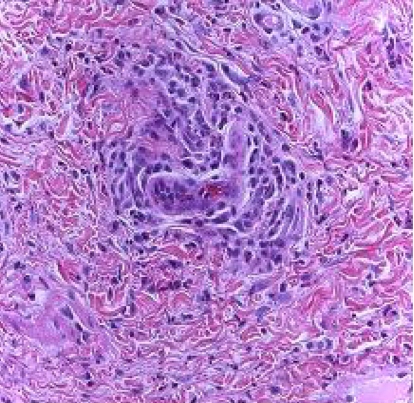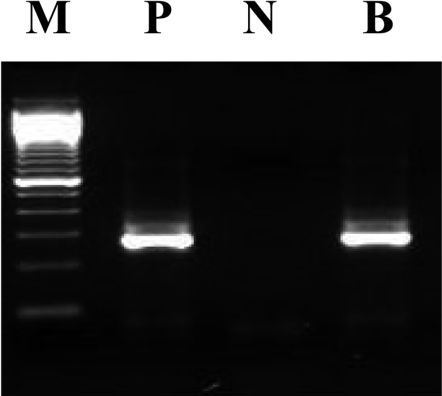Lab Anim Res.
2011 Mar;27(1):63-65. 10.5625/lar.2011.27.1.63.
Mural Folliculitis and Alopecia with Cutaneous Candidiasis in a Beagle Dog
- Affiliations
-
- 1Center for Animal Resources Development, Wonkwang University, Iksan, Republic of Korea. kimoj@wku.ac.kr
- 2Institute of Animal Experiment & Efficacy Evaluation, Wonkwang University, Iksan, Republic of Korea.
- 3Institute of Biotechnology, Wonkwang University, Iksan, Republic of Korea.
- KMID: 2391861
- DOI: http://doi.org/10.5625/lar.2011.27.1.63
Abstract
- A one-year-old male Beagle dog showed dermatitis, alopecia and scales. Examination of the affected dog revealed generalized alopecia, patchy erythema, and superficial erosions with histological evidence of mural folliculitis. External tests for parasites in scraped skin samples were negative. However, fungal culture tests and polymerase chain reaction revealed the existence of Candida in the lesion. These results suggest that cutaneous candidiasis may induce mural folliculitis and alopecia in dogs.
Keyword
MeSH Terms
Figure
Reference
-
1. Carlotti DN. Canine and feline superficial fungal skin infections. Vet Quart. 1997; 19(Suppl 1):S45–S46.
Article2. Cerundolo RD, Lloyd H, McNeil PE, Evans H. An analysis of factors underlying hypotrichosis and alopecia in Irish waterspaniels in the United Kingdom. Vet Dermatol. 2000; 11(2):107–122.3. Cleff MB, Lima AP, Faria RO. Isolation of Candida spp from vaginal microbiota of healthy canine females during estrous cycle. Braz J Microbiol. 2005; 36(2):201–204.
Article4. Fahey JV, Wira CR. Effect of menstrual status on antibacterial activity and secretory leukocyte protease inhibitor production by human uterine epithelial cells in culture. J Infect Dis. 2002; 185(11):1606–1613. PMID: 12023766.
Article5. Fotos PG, Hellstein JW. Candida and candidiasis. Epidemiology, diagnosis and therapeutic management. Dent Clin North Am. 1992; 36(4):857–878. PMID: 1397438.6. Guillot J, Chermette R, Maillard R. Candidosis in pet carnivores: report of ten cases. Point Vet. 1996; 28(175):51–61.7. Moretti A, Posteraro B, Boncio L, Mechelli L, De Gasperis E, Agnetti F, Raspa M. Diffuse cutaneous candidiasis in a dog. Diagnosis by PCR-REA. Rev Iberoam Micol. 2004; 21(3):139–142. PMID: 15709788.8. Scott DW, Miller WH, Griffin CE. Muller & Kirk's Small Animal Dermatology. 2001. 6th ed. Philadelphia: WB Saunders Company;p. 543–666.



